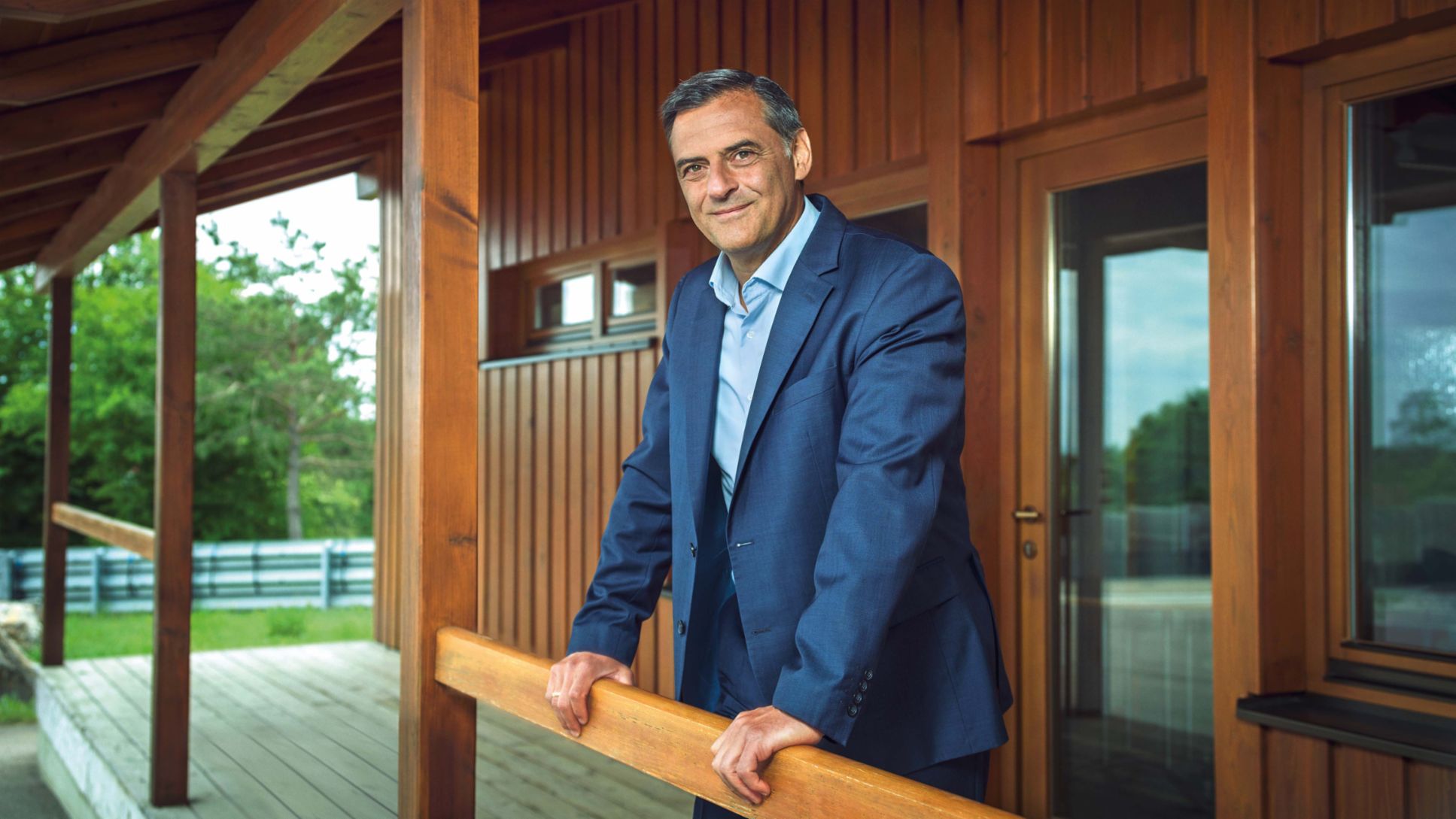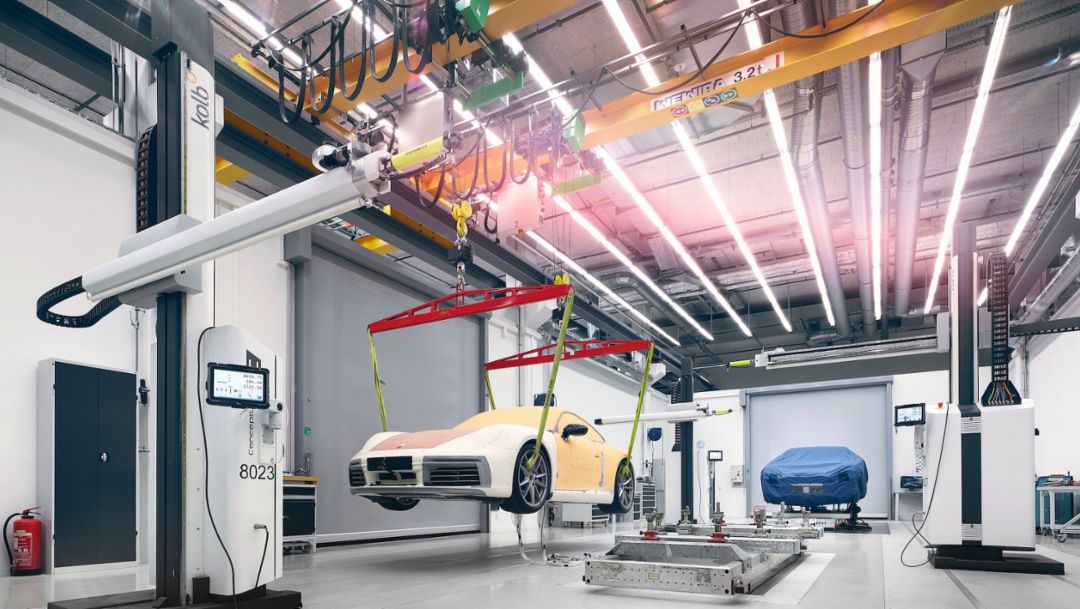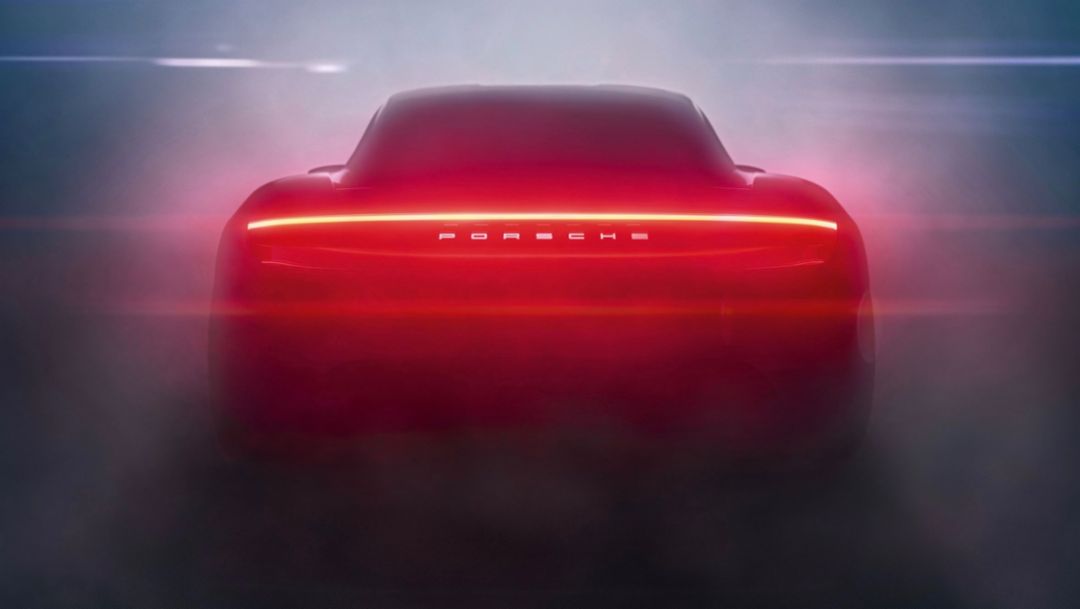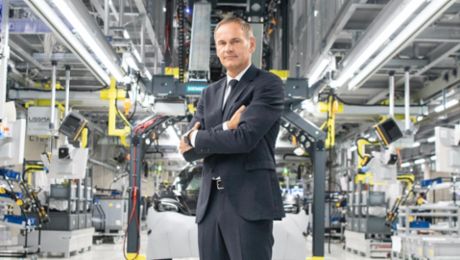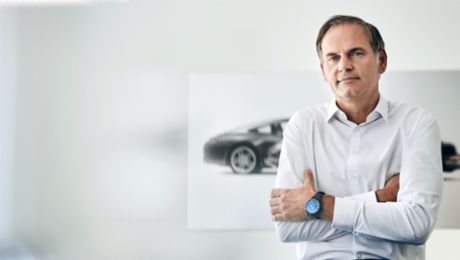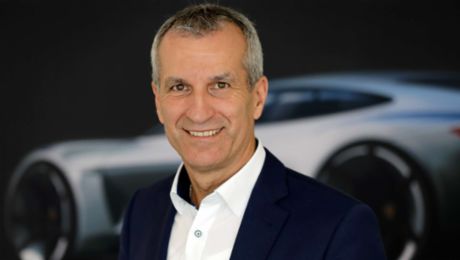Mr. Steiner, why is the “Black Forest cabin” in the middle of the test track your favourite place here in Weissach?
Michael Steiner: Almost every Friday afternoon I meet there with experts to view new technical developments in the cars and try them out – in a sporty manner – on the track. These meetings in the green heart of our development centre are real highlights for me. It’s great to be out of the office and with the actual cars. The cabin is an isolated space, and from there we drive onto the big proving grounds, the off-road course, and our other courses with different surfaces. The name of the cabin reflects the fact that we’re in the middle of the northern part of the Black Forest. As someone who loves nature, I’m very fond of this association.
What role does pleasure play for you when you drive?
Steiner: A huge one! It’s a joy to experience the precision and speed with which our models respond to steering inputs. Our vehicles are sports cars and also sporting equipment.
What brought you to Porsche in 2002?
Steiner: An affinity for the brand. A friend gave me a Porsche calendar when I was young, which hung in my room for many years. I love the proportions of the 911, and also of course its command of the road.
How would you compare the Weissach of two decades ago with how it is today?
Steiner: There’s an enormous difference. When I first came to Weissach it felt much more intimate. Although we already had 2,000 employees at the time, we now have a total of around 6,500 people.
How did this expansion take place?
Steiner: Weissach grew rapidly in connection with the range of models and the new technologies. The first large new building was the EIZ, or electronics integration center. That department was only founded in 2002, but today electric and electronic systems and software are fundamental. Another milestone was the 1:1 wind tunnel in connection with the design studio and model construction shop. Various new test buildings and centres were added. The racing division underwent extensive expansion for our Porsche 919 Hybrid program, which won Le Mans three times. People who haven’t been to Weissach in 20 years would hardly recognise the place now.
What are the most important tasks for the future?
Steiner: The most important task of all is to create desirable cars that people want to drive and own. What are changing are the technical systems and the dominant development focus on electric mobility. That doesn’t just mean driving with zero emissions around where you live: it also means the production chain has to work with renewable energy and sustainable principles. Connectivity is also key. It means shifting many functions out of the car to high-performance back-end processors with the help of permanent mobile communications systems. For example, most voice commands are no longer interpreted in the car itself but are sent to the cloud instead. Cars are increasingly becoming intelligent nodes on the internet. There’s a reason why we don’t call the interface between the driver and the car a “user experience” but rather a “driver experience”. The focus is expressly on the driver. Head-up displays, voice controls, touchscreens – all the operating functions have to merge with the driver just like the performance-related driving dynamics.
What does connectivity mean for driving safety?
Steiner: Cars are already observing their environments and communicating with drivers by means of assistance systems. They’ll help you stay in your lane, for instance, or warn you of fatigue. But all these systems – whether they’re radar, camera, or sensor-based – depend on eye contact. It’s similar to the way the human eye works. A radar system can see better than a human eye in the rain, but it can’t see what’s happening on the next side street. That’s where connectivity comes into play. With swarm intelligence, cars can warn each other and use intelligent traffic signs to communicate. The 5G network will bring a lot of progress in this area.
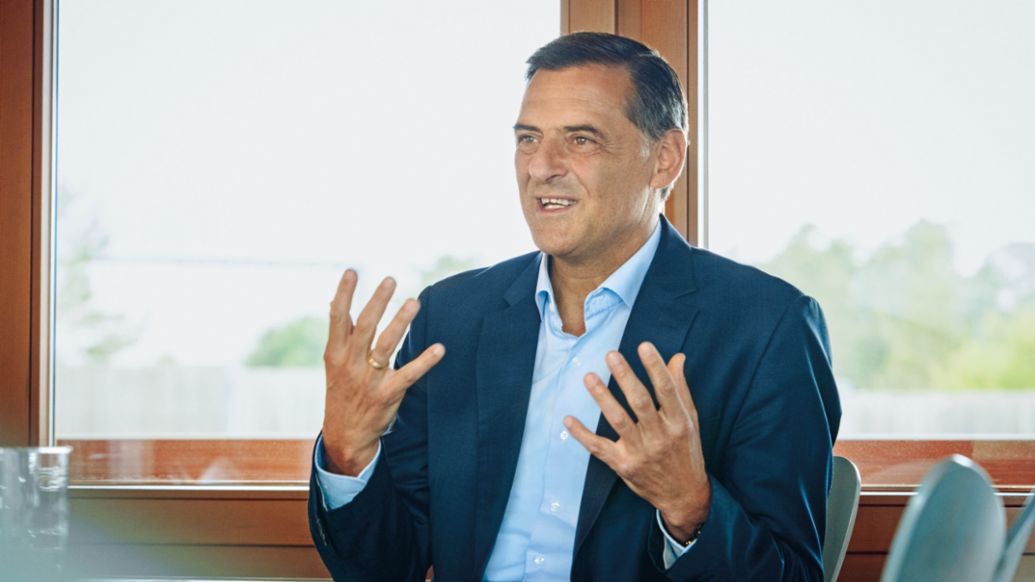
How is Porsche mastering the transition in mobility?
Steiner: This transition is a major challenge for the entire industry. As far as Porsche is concerned, I view it as an opportunity, because we’ve succeeded in changing course rapidly, and even in charting our own course – which differs from the development of ever more assistance systems up to autonomous driving. The opposite of being a passenger is surely a Porsche. That original form of driver experience can create a counterpoint to vehicles that no longer give you a chance to experience something yourself, and maybe no longer even have a steering wheel.
You have four sons – do they help sharpen your view of the future?
Steiner: Yes, a little. Not everything a father finds appealing is of interest to the next generation, and the same is true the other way around. For example, I haven’t warmed up to the idea of spending my free time gaming or sim racing. For my children it’s perfectly natural to interact virtually with friends who are far away. But there are also things that my children and I experience in similar ways. Like the pleasure of driving in a Porsche – and they also love the sound of combustion engines.
Are your children interested in owning their own cars?
Steiner: One of the boys has a car and likes to work on it. I’m curious as to whether the other three will also end up buying a car. To some extent it’s a question of their living environment, because not everyone needs to have a car available all the time.
What innovations from Porsche would you single out?
Steiner: I think the PDK dual clutch transmission is very important. The ability to shift gears without interrupting traction was developed for racing in 1984, and then made available for series production cars in 2008. A good example of a major recent Porsche invention is the 800-volt technology for electric cars, because it combines numerous advantages. Smaller wiring cross-sections reduce weight and installation space, the cars have more power, and we can also charge them faster.
“Our 800-volt technology for electric cars is a Porsche innovation on its way to becoming an industrial standard.” Michael Steiner
The 800-volt technology is a unique characteristic of Porsche.
Steiner: At the moment, yes. But much more important is the fact that it’s a Porsche innovation on its way to becoming an industrial standard. You can see this with Electrify America’s charging infrastructure in the USA and Ionity’s in Europe. A Korean company is focusing on this technology as well, and in China there’s a similar class with 700 volts.
To what extent was the 919 Hybrid involved in this innovation?
Steiner: That racing car was definitely a trigger. We used the considerably higher level of voltage to reduce weight and increase performance in a small amount of space. But racing cars have the smallest components. It was quite a different challenge to get components for the Porsche Taycan. The industry had settled on a 400-volt standard, and it was very difficult to recruit suppliers and partners for a series production car with 800 volts, because we were the only ones who wanted to do it that way.
How important is battery development?
Steiner: Extremely important! I like to call the individual cells the combustion chambers of the future. Their energy density translates directly into range. But for Porsche the performance density is also important, namely, how quickly the cells can take in energy and use it. What’s also important is the service life without losing any performance, or, in other words, the repeatability. There’s a lot of potential in the chemistry of fuel cells as well as in clever ways of combining cells into modules and in thermal management. Another important area is how to protect cells in the event of serious accidents. In an electric car the battery is by far the largest element. The most secure location for it is in the passenger compartment – placed in the vehicle floor for reasons of relevance to the centre of gravity.

What expertise will Porsche gain from the Formula E?
Steiner: We’ve already been able to learn a lot about efficient high-speed electric motors and operating strategies. The ability to perform strong braking manoeuvres with electric motors is very advantageous – in other words, to use their resistance to recover a lot of energy. That will give you considerably more range. To maximise stability we’re finding the best ways to shift the recovery load between the axles and to control supplementary use of the mechanical brakes. We’re also gaining a lot of experience in thermal and stress management for the cells.
What’s your opinion of the high-speed charging infrastructure – in Germany, in Europe, and in the world at large?
Steiner: There are in fact a number of regional differences to be considered. In Germany most owners of electric cars charge them at home overnight or at their workplaces during the day. To do that, all you need is an AC charging station with 11 or 22 kilowatts. In our region, high-speed charging stations are typically in demand along highways. In my opinion, the infrastructure here is not expanding fast enough, but in global terms I see completely different issues. Even in southern Europe a lot of households do not have sufficiently powerful three-phase current capacities. In other regions – China is one example – many people live in large residential complexes without individual connections for their units. Charging stations are often still not allowed in shared garage spaces. That makes high-speed charging relevant for urban areas as well. There’s a lot to do. But we should also remember it took more than just a decade to achieve the density of gas stations we have today.
Which models will be the next to have all-electric drives?
Steiner: Versions of the Taycan are coming up very soon. We want the Cross Turismo to offer even more practical benefits such as higher charging volumes. And a fully electric Porsche Macan is next in line after that.
What will Porsche sports cars look like 30 years from now?
Steiner: I think they’ll still have typical sports-car proportions. Low, on the broad side and with evident muscularity, yet soft lines. Not tough, but attractive. With electric mobility the aerodynamics and frontal areas play a greater role, which means the cars will become even more compact and streamlined.
And what does the head of development do to relax?
Steiner: Hiking and mountain climbing are my favourite activities, and skiing in the winter, both downhill and cross-country. Whenever possible in places where there aren’t too many people. If there’s not enough time I go bike-riding or jogging, or play soccer with a group of older guys. I love anything I can do outside.
Have you been influenced by the ideas of Ferry Porsche?
Steiner: His dream of creating something that didn’t yet exist continues to impress me to this day. Making dreams come true – now, soon, or far off in the future – is a wonderful and inspiring ambition.
Info
Text first published in Porsche magazine Christophorus, No. 397.
